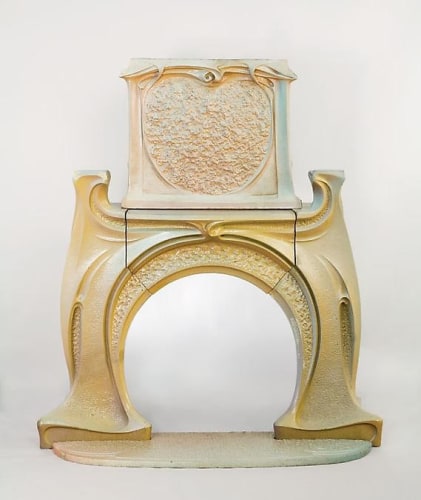



Haugton International Art + Design Fair
As with many artistic movements, Art Nouveau has become synonymous with a few key practitioners. Names such as Émile Gallé, Louis Majorelle, and René Lalique live on, diminishing Art Nouveau in France to a small cast of characters that safeguard its survival in our ever-shrinking cultural memory. The architect-designer Hector Guimard undoubtedly belongs on this short list of Art Nouveau luminaries. Yet where in does his greatness lie? Guimard is often credited with introducing Art Nouveau style to French architecture. This is partly true, but fails to acknowledge that Art Nouveau was not a cohesive movement or style in the mid-1890s, when Guimard completed his first masterpiece, the Castel Béranger. Guimard, however, eagerly embraced modernity, a fundamental principle of the New Art. Rapidly accelerating industrial and social changes in fin-de-siècle Europe prompted a dramatic reappraisal of cultural artifacts: Proponents of Art Nouveau strove to imagine what the modern world should look like, and then to realize their objectives in a vast array of mediums.
Guimard strongly believed that the modern architect must assume responsibility for designing every element of a commission, from façade to doorknob. This all-encompassing approach placed him at the forefront of an international group of architect-designers who championed the creation of Gesamtkunstwerk, that is, total works of art. (Other innovators included Henry van de Velde and Victor Horta in Belgium, Charles Rennie Mackintosh in Scotland, and Antonio Gaudí in Spain.)
Of these like-minded individuals, Henry van de Velde was the first to articulate the need to eliminate hierarchical divisions among the arts. "We can't," he wrote in 1894, "allow a split which aims at single-mindedly ranking one art above the others, a separation of the arts into high art and a second class, low industrial arts." Van de Velde's timely remarks expressed a growing sentiment among artists and artisans alike. No medium was too humble for the expression of artistic intent, and only by making ordinary objects beautiful could art be successfully integrated into modern life.
For Guimard, the design philosophy that informed Gesamtkunstwerk enabled him to merge the functional and decorative aspects of his architecture into unified ensembles. Iron, whether wrought or cast, was elevated to new heights of decorative possibility. Guimard's incomparably beautiful use of this humble metal strikes at the heart of the question of which elements of a building are worthy of being seen, as well as what constitutes "high" and "low" materials. Because of the artistry of its conception and fabrication, Guimard's ironwork dwells on an equal aesthetic plane with more costly adornments.